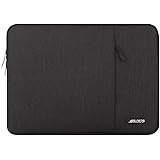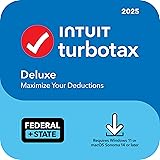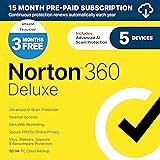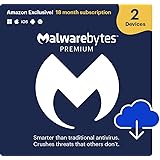Did you know businesses can deduct up to $1.16 million in equipment costs annually under the Section 179 deduction1? This IRS rule alone could slash tax bills by thousands, yet many overlook such opportunities. For small businesses, tax strategies for entrepreneurs like home office deductions—up to $1,500 using a $5-per-square-foot standard rate—can also boost savings12.
Business taxes aren’t just about following rules—they’re a way to grow. Properly tracking expenses like vehicle mileage or retirement contributions can cut taxable income1. But mistakes, like mixing personal finances with business funds, can make deductions invalid1. With IRS audits on the rise, staying informed is key to protecting profits1.
Key Takeaways
- Section 179 deductions let businesses write off up to $1.16 million in equipment purchases yearly1.
- Home office deductions use either actual costs or a $5-per-square-foot rate, maxing at $1,50012.
- Quarterly tax payments are due April 15, June 15, September 15, and January 15 to avoid penalties2.
- Retirement plan contributions reduce taxable income while boosting long-term savings1.
- R&D Tax Credits offset innovation costs, lowering tax bills for product development1.
Mastering business taxes unlocks hidden savings. This guide reveals how tax strategies for entrepreneurs turn compliance into cash flow. Let’s dive in1.
Understanding Business Taxes: The Foundation of Financial Success

Learning about business taxes is crucial. There are three main types: income, sales, and property taxes3. For instance, income taxes are 21% for C corporations3. Sales taxes vary by state, and property taxes can be over 30% of local revenue3.
Types of Business Taxes You Need to Know
- Income Taxes: Federal corporate taxes at 21% apply to C corporations3.
- Sales Taxes: States-specific rates apply to goods sold, varying by location3.
- Property Taxes: Assessed on real estate and equipment, often tied to asset value3.
How Business Structure Affects Tax Liability
Sole proprietors pay self-employment taxes, while S corporations avoid double taxation3. LLCs offer pass-throughs, reducing federal reporting. Choosing the right structure cuts costs and simplifies business tax compliance.
The Difference Between Federal, State, and Local Business Taxes
Federal taxes set nationwide rules, like the 21% corporate rate. States add sales and income taxes, while local governments collect property taxes. Overlap exists, so tracking all three is key to compliance3.
Essential Tax Deductions for Small Businesses That Boost Your Bottom Line

Understanding what you can deduct is key to saving on taxes. For instance, the simplified home office deduction lets you deduct $5 per square foot, up to 300 square feet. This totals $1,5004. It’s simpler than tracking every expense but still helps lower your taxable income.
Section 179 also offers a big benefit. It lets you deduct up to $1.22 million for qualifying equipment purchases in 20245.
- Vehicle expenses: Track mileage at 67 cents per business mile in 20245.
- Meal expenses: 50% of business-related meals qualify6.
- Startup costs: Up to $5,000 can be deducted immediately, with excess costs amortized over 180 months6.
| Method | Simplified | Regular |
|---|---|---|
| Calculation | $5/sq ft (max $1,500) | % of home expenses based on office space |
| Effort | No receipts needed | Track utilities, mortgage, and maintenance |
Expenses like accountant fees and industry conference costs are fully deductible if they’re for business taxes6. Software costs, like cloud storage and accounting tools, also qualify if they’re mainly for business. For example, a $500,000 software purchase could reduce taxable income by 60% in 2024 under bonus depreciation rules4.
“Every dollar saved on taxes is a dollar you can reinvest in growth,” says IRS guidance on small business compliance.
Keep records for travel, supplies, and equipment purchases. Even small deductions can add up. For example, you can deduct 100% of business-related web hosting fees or $25 per employee gift. Always check Form 4562 for property depreciation details6. With smart planning, these deductions can save you real money.
Navigating IRS Tax Regulations for Businesses: Compliance Made Simple
Following irs tax regulations for businesses means watching deadlines, keeping records, and talking to the IRS. We’ll make these steps easy to follow. This way, you can avoid penalties and stay on track.
Key Filing Deadlines Every Business Owner Should Know
Each business type has its own deadlines. irs tax regulations for businesses set key dates like April 15 for most returns7. If you expect to pay $1,000+ in taxes, you must make quarterly payments by April 15, June 15, September 15, and January 158.
Missing these deadlines can lead to penalties. You could face up to 1% monthly interest on what you owe8.
| Deadline Type | Date | Details |
|---|---|---|
| Federal Tax Return Filing | April 15 | Main due date for most businesses7 |
| Estimated Payments | April 15, June 15, Sept 15, Jan 15 | Mandatory if taxes owed exceed $1,0008 |
Record-Keeping Requirements That Protect Your Business
Keeping good records is key. Hold onto receipts, invoices, and inventory logs for three years9. Use the IRS’s simplified method to track home office space8.
Good records help avoid audits and make tax time easier.
Handling IRS Notices and Communications Effectively
Act fast if the IRS reaches out. Read notices well and seek help if needed. You can appeal IRS decisions8. Ignoring IRS messages can lead to fines or liens.
Being organized helps reduce stress. Use digital tools to keep track of deadlines and records. The irs tax regulations for businesses focus on clear communication and quick action to prevent costly errors.
Corporate Tax Planning Strategies That Minimize Your Tax Burden
Effective corporate tax planning turns tax challenges into chances for growth. Begin by matching financial moves with tax schedules. For example, businesses can delay income or speed up deductions to cut taxes in years when they’re higher10. Also, buying big items at the right time can lead to big savings through bonus depreciation10.
Choosing the right business structure is key for business taxes. C corporations face taxes on profits and dividends twice, while pass-through entities like LLCs or S corps pass income straight to owners. This can qualify for a 20% QBI deduction10. See the comparison in the table below:
| Entity Type | Tax Structure | Key Advantage |
|---|---|---|
| C Corporation | Double taxation | Suitable for scaling with investors |
| LLC/S Corp | Pass-through | Avoid corporate tax rates |
Expanding globally needs careful planning. Companies must use tax treaties to avoid double taxation and follow rules like FBAR and FATCA10. With over 30 TCJA provisions set to expire in 202511, it’s crucial to plan ahead.
Pro tip: The IRS has a $24B audit budget, so accuracy is key11. Use strategies with audit-ready records. For complex deals or R&D tax credits, get expert advice10.
Maximizing Tax Credits for Business Owners: Money Left on the Table
Did you know 90% of business owners miss out on tax credits for business owners that could slash their tax bills12? Unlike deductions, tax credits cut your liability dollar for dollar—making them a powerful tool for entrepreneurs. Here’s how to claim your share.
“Credits are the closest thing to free money in tax planning.” – IRS Tax Advocate Service
Key credits often overlooked include:
- Work Opportunity Tax Credit: Save $2,400–9,600 per hire for hiring veterans, disabled individuals, or SNAP participants13
- Research & Development Credit: Available to manufacturers, software developers, and even small retailers innovating products or processes13
- Clean Vehicle Credit: Up to $7,500 for electric or hybrid vehicles used in business operations13
| Credit | Eligibility | Max Savings |
|---|---|---|
| Disabled Access Credit | Businesses modifying facilities for accessibility | $5,000 annually |
| Small Business Health Care Tax Credit | Employers offering affordable health coverage | Up to 50% of premium costs |
State-specific credits add extra savings—like California’s Clean Energy Credits or New York’s R&D incentives. Tax strategies for entrepreneurs should include a yearly review of these opportunities. Start by mapping expenses and hires to credits like the Work Opportunity Tax Credit. Even small businesses qualify—don’t let this cash stay on the table!
State and Local Business Tax Laws: Navigating the Complex Landscape
Understanding state and local business tax laws is crucial to avoid big mistakes. Over 60% of small businesses find these rules very hard to follow14. The rise of remote work and online sales makes things even more complicated.
“Proactive tax planning reduces penalties by up to 50% through proper compliance strategies”14
Multi-State Tax Obligations for Remote and Expanding Businesses
Remote workers in other states might need to file taxes there14. New rules for online sales mean you must file taxes if you make over $500,000 in a state15. Keep track of all your physical and digital presence to stay out of trouble.
Sales Tax Compliance in the Digital Age
After Wayfair, you must collect sales tax in states where you have economic nexus. Sales tax rates can be as low as 0% or as high as over 10%16. While tools like software can help, mistakes can still happen. More than 70% of businesses hire experts to handle these tasks16.
Property Tax Considerations for Business Assets
Business property taxes usually cost about 1.1% of the property’s value14. But, some industries get special breaks. Regularly check your property’s value—challenging it could cut your taxes by 20-30%. Make sure you know the local business tax compliance rules for your equipment, real estate, and more15.
Year-Round Tax Strategies for Entrepreneurs That Drive Growth
Year-round tax strategies for entrepreneurs make business taxes work for growth. Planning ahead helps match financial moves with goals. This reduces surprises and increases cash flow. Start by checking deductions and credits every month.
For example, the Section 179 deduction lets businesses deduct up to $1.25 million for equipment purchases
- Track profits every quarter to adjust business taxes payments. This way, you avoid penalties by paying on time.
- Take advantage of bonus depreciation—80% in 2023, 60% in 2024—when buying machinery to lower taxable income17.
- Match retirement plans with tax breaks. Employers get 100% deductions for start-up costs of retirement plans, up to $5,000 annually17.
Investing in green tech is smart. The Inflation Reduction Act offers $400 billion in tax credits for clean energy. This includes solar panels, electric vehicle stations, and energy-efficient upgrades18. It lowers costs and boosts sustainability.
“Tax planning isn’t a sprint—it’s a marathon,” says financial advisor Sarah Lin. “Monthly check-ins prevent last-minute stress.”
Keep an eye on deadlines. The 20% Qualified Business Income (QBI) deduction ends in December 202519. Also, check state incentives for hiring or expanding. Use software like QuickBooks or Xero to track deductible expenses like mileage (70 cents per mile in 2025).)17
Year-round strategies mean less guesswork. By using tax rules like IRA energy credits and expiring deductions in daily decisions, entrepreneurs build stability. Small steps today lead to bigger gains over time.
Business Tax Filing Requirements: Avoiding Costly Mistakes
It’s key to follow business tax filing requirements to avoid penalties and audits. We’ll cover how to file correctly, from picking the right schedule to avoiding mistakes.
Quarterly vs. Annual Filing: What’s Right for Your Business
| Filing Type | Frequency | Common Forms |
|---|---|---|
| Quarterly | Every 3 months | Form 941 (payroll), Estimated Tax Payments |
| Annual | Once yearly | Form 1120, 1040 Schedule C |
Businesses with over $500 in taxes a year must file quarterly20. Late payments can lead to penalties up to 10% of the unpaid amount per month20. Check your cash flow and tax needs to pick the right schedule.
Common Tax Form Errors and How to Prevent Them
- Unclear handwriting or math mistakes: Double-check calculations using IRS worksheets.
- Missing signatures: Both business and owner signatures are required on key forms.
- Expense misclassification: Track receipts and categorize expenses accurately to avoid IRS scrutiny21.
More than 70% of small businesses mix personal and business expenses, increasing audit risks20. Use accounting software to log every expense automatically.
When to File Extensions and How to Do It Properly
Extensions delay deadlines but don’t pause penalties for unpaid taxes. For example, not paying by April 15 may still incur fees even with an extension20. File Form 7004 by the original deadline to get more time for preparing documents.
Business tax compliance needs careful attention. Tip: Check IRS guidelines and talk to experts to make sure all forms are correct before submitting.
Technology and Tools That Streamline Your Business Tax Management
Managing business taxes is now simpler than before. New tools help with compliance and saving money. They automate calculations and track deductions, making sure everything is accurate. This lets entrepreneurs focus on growing their business.
- Accounting software: Programs like QuickBooks or Xero help with invoicing, payroll, and tax prep. They automatically update data, cutting down on manual work and mistakes.
- AI-driven platforms: Tools like Bloomberg Tax use AI to understand tax codes and predict costs. One user saved a month of work each year by switching from spreadsheets22.
- Compliance automation: Systems like TaxAct Business reduce filing time by 50% and avoid penalties by ensuring accuracy23.
- Cloud-based solutions: These solutions update in real-time, keeping you up-to-date with law changes. For example, the IRS’s new Direct File program for 25 states starts in 2025, requiring tools that adapt to such shifts23.
“Automation isn’t just efficient—it’s essential for scaling tax strategies for entrepreneurs.”
Choose tools that grow with your business. Start with easy apps for small teams or go for big solutions with advanced reports. Make sure they have strong security features like GDPR compliance and backup options23. Whether you’re starting out or have a big business, the right tech makes tax season a chance to gain an edge.
Working With Tax Professionals: When and How to Get Expert Help
Choosing the right tax professional is key to keeping your business in line with irs tax regulations for businesses. Over 70% of taxpayers say getting help from a pro makes a big difference24. First, find someone who fits your business needs.

Selecting the Right Tax Professional for Your Business Needs
Look at your situation and compare:
| Type | Expertise | Best For |
|---|---|---|
| CPA | Financial planning, complex filings | Growing businesses |
| Enrolled Agent | IRS disputes and audits | Non-compliant histories |
| Tax Attorney | Legal tax strategies | High-risk industries |
Cost-Benefit Analysis of Professional Tax Services
Fees range from $200 to $400 per return25. But, the benefits often outweigh the costs.
Professionals help avoid mistakes: 25% of DIY filers face penalties24. A
“Taxpayers with pros maximize 30% more deductions”
than those who file alone24.
Building a Productive Relationship With Your Tax Advisor
Good teamwork needs:
- Sharing all financial records annually
- Talking about long-term goals like expansion or mergers
- Checking PTIN compliance every 6 months26
Annual checks keep you up-to-date with irs tax regulations for businesses and lower penalties26. Spend time building trust for lasting success.
Conclusion: Taking Control of Your Business Tax Strategy
Managing business taxes doesn’t have to be hard. By using tax deductions for small businesses and tax credits for business owners, you can make taxes work for you. Small businesses can lower their taxes by deducting things like employee salaries and business travel27.
Even small steps, like the qualified business income deduction (up to 20% for eligible pass-through entities), can make a big difference28.
Stay ahead by making your tax plan fit your business. Use tools like Section 179 deductions (up to $1.05 million in 2021) for equipment purchases28. Keeping good records is key. Laws change, so check your plan every year to stay on track and find new savings.
Even small changes, like when you earn income or your business structure, can help a lot29.
If you hit a snag, get help from experts. CPAs and tax advisors can find deductions you might miss, like for startup costs or bad debt27. Technology makes following the rules easier. Whether you’re starting out or growing, including tax planning in your decisions keeps you strong financially28.
Tax strategy is not just a one-time thing. It’s an ongoing process that pays off with attention and effort. Start today to simplify your taxes and grow with confidence.
FAQ
What types of business taxes should I be aware of?
How does my business structure impact my tax obligations?
What are the federal, state, and local business taxes I need to consider?
What are some common tax deductions available to small businesses?
How can I ensure compliance with IRS tax regulations?
What strategies can help minimize my corporate tax burden?
What tax credits are available for business owners?
How do I manage multi-state tax obligations?
What technology can help streamline my business tax management?
How do I choose a tax professional that’s right for my business?
For more Financial Information, read this next:











